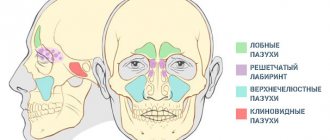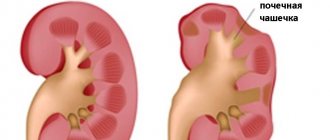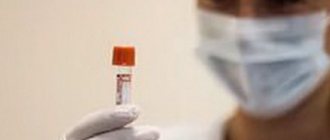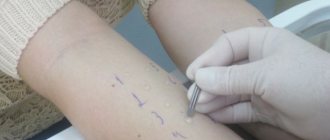Childhood infections are a group of infectious diseases that occur primarily in childhood and, after recovery, leave lasting immunity. Childhood infections include measles, rubella, chickenpox, scarlet fever, whooping cough, and mumps. Childhood infections occupy a leading place in the structure of childhood morbidity, despite the development of immunization.
Measles is an acute infectious disease. Characteristic manifestations of measles are an increase in temperature to 38-40.5 C, symptoms of intoxication (headache, weakness, loss of appetite, aches in muscles and joints), skin rash, inflammation of the mucous membrane of the nasopharynx, upper respiratory tract, eyes. The source of the disease is a sick person. The route of transmission is airborne. The causative agent of the infection is the RNA virus Polynosa Morbilarum. The measles virus is not resistant to physical and chemical factors. Remains in the environment for no more than 30 minutes.
The measles virus is highly contagious, with the highest incidence observed among children aged 1-5 years.
The disease begins acutely, the child's temperature rises to 38-39 C, catarrhal symptoms and symptoms of intoxication appear. On the 2-3rd day, the temperature decreases, and catarrhal symptoms increase. On the second day of the disease, whitish spots with a red border appear on the mucous membrane of the cheeks - Belsky-Filatov-Koplik spots; from days 3-5, skin rashes characteristic of measles appear. The rash descends from top to bottom: first it covers the upper part of the face, neck, then the torso, arms and legs. The rash is bright pink in color and consists of small maculopapular elements that tend to merge. The rash fades in the same order. After the rash, pigmentation and peeling remain on the skin.
Laboratory confirmation of measles is carried out using a molecular biological method (detection of virus RNA using polymerase chain reaction) and a serological method (detection of specific antibodies in the blood).
- Antibodies to measles virus (Measles), Anti-Measles, IgG, semi-quantitative determination.
- Measles virus (Measles), qualitative determination of IgM class antibodies.
The criteria for recovery from measles are: persistent normalization of temperature for 3 days or more, absence of signs of intoxication, absence of catarrhal phenomena in the oropharynx, extinction of the rash.
Chicken pox is an acute infectious disease. It manifests itself as fever, moderate intoxication and a polymorphic (spotty, vesicular, papular) rash on the skin. The route of transmission is airborne. The source of the disease is a sick person. The causative agent of chickenpox is the DNA-containing Varicella Zoster virus, which belongs to the herpes family.
The clinical picture of a typical form of chickenpox consists of several periods: incubation, prodromal, period of rash and period of reverse development.
The incubation period ranges from 11 to 21 days.
The prodromal (initial) period lasts from several hours to two days. It is characterized by moderate intoxication, low-grade fever, exanthema syndrome - a pinpoint rash appears on the skin, which precedes the appearance of typical rashes.
During the period of rash, the temperature rises to febrile levels, and moderately severe symptoms of intoxication appear. Elements of a macular vesicular rash appear on the skin, on the mucous membrane of the oropharynx, on the tongue, rarely on the mucous membrane of the eyes and conjunctiva. Vesicles (bubbles) are round or oval in shape, with transparent contents. New rashes appear within 2-5 days, in spurts. Then the chickenpox elements gradually dry out, crusts form and light pigmentation on the skin. Each new wave of rashes is accompanied by an increase in body temperature. There is a direct relationship - the more pronounced the rash, the more severe the symptoms of intoxication in patients with chickenpox.
Chicken pox can have complications. These are inflammatory diseases of the skin and subcutaneous fat - pyoderma, phlegmon. Pneumonia, myocarditis, nephritis, hepatitis, and arthritis occur rarely. Possible damage to the nervous system - encephalitis.
Our information
Childhood infections are the name given to a group of infectious diseases that people contract mainly during childhood.
These usually include varicella (chickenpox), rubella, mumps (mumps), measles, scarlet fever, polio, whooping cough, and diphtheria. Infections are transmitted from a sick child to a healthy child. After an illness, a stable (sometimes lifelong) immunity is formed, so people rarely get sick with these infections again. Now there are vaccines for almost all childhood infections.
Related article: Children's infections in figures and facts: whooping cough lasts 7 weeks, and scar rash
Treatment of childhood infections
To prevent the spread of infection, the first step is to isolate the patient at home or in a specialized hospital. In moderate and severe cases of the disease, the child must be hospitalized in a hospital, in a boxed ward. The mild form is treated on an outpatient basis, at home.
For the treatment of infections of viral etiology - measles, rubella, chickenpox, mumps, antiviral drugs are recommended. Therapy for scarlet fever and whooping cough is based on the prescription of antibacterial drugs.
Treatment is also recommended to block the pathological mechanisms of disease development and alleviate the symptoms of childhood infections.
Varicella (chickenpox)
It is caused by the herpes virus, which is transmitted by airborne droplets from sick children to healthy ones. The incubation period is from 10 to 21 days.
The disease begins with a rise in temperature, which is accompanied by the appearance of a rash in the form of spots and general malaise. Over time, the spots turn into bubbles with a clear liquid, which burst, dry out, and then crusts form. A typical difference between chickenpox and other diseases accompanied by rashes is the presence of a rash on the scalp. All elements of the rash are simultaneously present on the patient’s skin: spots, blisters, and crusts. New additions are possible within 5–7 days. Drying of the wound and formation of crusts is accompanied by severe itching.
A patient with chickenpox is contagious from the moment the first element of the rash appears and for another 5 days after the appearance of the last element.
How to treat a rash during chickenpox →
Treatment
In its normal course, chickenpox does not require treatment. The main thing is hygiene and good care, which help prevent the elements of the rash from suppuration.
In Russia, it is customary to lubricate bubbles with brilliant green. In fact, this is not necessary - in Western countries, for example, brilliant green is not used. In many ways, its use is really inconvenient: it stains laundry and does not wash off for a long time. But our tradition also has its advantages. If you mark new elements of the rash with brilliant green, it is easy to track the moment when the rash stopped.
If the temperature rises above 38 °C, the child should be given an antipyretic drug, preferably paracetamol-based medications. Don't forget about antihistamines and topical balms and ointments to relieve itching. The use of antiherpetic drugs is not recommended: a child does not develop immunity when taking them, and re-infection is possible.
Prevention
There is a vaccine against the chickenpox virus, it is registered in Russia, but it is not included in the National Vaccination Calendar, that is, it is not given to everyone for free. Parents can vaccinate their child for money at vaccination centers.
Vaccinal prevention of childhood infections
Currently, preventive vaccinations against whooping cough, measles, rubella, and mumps are included in the national vaccination calendar of the Russian Federation. Preventive vaccination against chickenpox is included in the list of preventive vaccinations for epidemic indications.
Bibliography.
- Clinical recommendations (treatment protocol) for providing care to children with chickenpox.
- Clinical guidelines “Measles in children” (approved by the Russian Ministry of Health), 2015.
- Clinical recommendations (treatment protocol) for providing assistance to children with scarlet fever.
- Clinical recommendations (treatment protocol) for providing care to children with mumps.
Diphtheria
Article on the topic
Cancer, cholesterol and diphtheria. 4 discoveries that changed medicine The causative agent of the disease is the diphtheria bacillus. You can become infected from a sick person or from a carrier of the infection. Once on the mucous membranes (or skin), it releases a toxin that causes necrosis of the epithelium. The nervous and cardiovascular systems, adrenal glands, and kidneys may also be affected. The incubation period is 2–10 days. A characteristic sign of diphtheria is a grayish, pearlescent film covering the affected mucous membranes.
The disease begins with an increase in body temperature (usually no higher than 38 °C), slight soreness and moderate redness of the mucous membranes appear. In severe cases, the temperature immediately rises to 40 °C, the child complains of a headache and sore throat, sometimes in the stomach. The tonsils may become so swollen that they make breathing difficult.
Treatment
The child is hospitalized and given anti-diphtheria serum. After hospitalization, the room in which the patient was located is disinfected. All persons who were in contact with him are subject to bacteriological examination and medical observation for 7 days. Children who have been in contact with the patient are prohibited from visiting child care facilities for this period.
Prevention
All children are vaccinated against diphtheria with the combined DTP vaccine. In rare cases, a vaccinated child may also become ill, but the disease will be mild.
Whooping cough
An infection that is transmitted by airborne droplets and causes a painful cough. The source of infection is a sick person. The incubation period is from 3 to 14 days (usually 7–9). There are three periods during the course of the disease.
Article on the topic
Childhood infection: Respiratory syncytial virus is more dangerous than colds and flu
The catarrhal period is characterized by the appearance of a persistent dry cough, which gradually intensifies. There may also be a runny nose and an increase in temperature to low-grade (but more often it remains normal). This period can last from three days to two weeks.
The spasmodic, or convulsive, period is characterized by coughing attacks. They consist of cough impulses - short exhalations, following one after another. From time to time the tremors are interrupted by a reprise - an inhalation, which is accompanied by a whistling sound. The attack ends with the release of thick mucus, and there may be vomiting. The severity of the attacks increases over 1–3 weeks, then stabilizes, then the attacks become less frequent and disappear. The duration of the convulsive period can be from 2 to 8 weeks, but often lasts longer.
After this, the resolution period begins. At this time, the cough, which seems to have gone away, may return, but the patient is not contagious.
Treatment
Antibiotics from the macrolide group, centrally acting antitussives, and inhaled bronchodilators are prescribed. Non-drug methods play an important role in therapy: staying in the fresh air, gentle regimen, eating high-calorie foods, small amounts, but often.
Prevention
Vaccination against whooping cough is included in the National Calendar and is given to children free of charge. Sometimes vaccinated children also get sick, but in a mild form.
Measles
A viral infection that is spread by airborne droplets. The source of infection is a sick person. The incubation period is 8–17 days, but can be extended to 21 days.
Measles begins with an increase in temperature to 38.5–39 °C, a runny nose, a dry cough, and the appearance of photophobia. The child may experience vomiting, abdominal pain, and loose stools. At this time, on the mucous membranes of the cheeks and lips, on the gums, grayish-white spots the size of poppy seeds, surrounded by a red corolla, can be found. This is an early symptom of measles, allowing diagnosis before the rash appears.
A rash - small pink spots - appears on the 4th–5th day of illness. The first elements appear behind the ears, on the back of the nose. By the end of the first day, it covers the face and neck, and is localized on the chest and upper back. On the second day it spreads to the torso, and on the third day it covers the arms and legs.
Treatment
Antiviral drugs and immunomodulators are used in the treatment of measles. In severe cases, intravenous injections of immunoglobulin may be prescribed. The rest of the treatment is symptomatic.
Bed rest is needed not only on days of high temperature, but also for 2-3 days after it decreases.
Having measles affects the nervous system. The child becomes capricious, irritable, and gets tired quickly. Schoolchildren should be freed from overload for 2-3 weeks, and sleep and walks should be extended for preschool children.
Prevention
The first measles vaccination is given to all children a year, the second at 7 years of age.
Childhood diseases
Pediatrics is an independent field of medicine that studies age-related developmental characteristics of children, childhood diseases, as well as issues of organizing care for healthy and sick children. Initially, the subject of pediatrics was exclusively early childhood diseases and their treatment. In the modern understanding, pediatrics covers various aspects related to the normal development and diseases of children at various age periods (from birth to puberty). These areas include physiology, hygiene, dietetics, childhood diseases, their treatment and prevention.
The goal of pediatrics is to preserve or restore (in case of illness) children's health, providing opportunities for the full physical, intellectual and emotional development of each child. The “chief physician” for children’s diseases is a pediatrician. Like a therapist for adults, a pediatrician is a universal pediatric specialist who can diagnose various childhood diseases and, if necessary, refer the child for consultation with specialist doctors: a pediatric neurologist, a pediatric dermatologist, a pediatric urologist, a pediatric gynecologist, a pediatric allergist-immunologist, pediatric cardiologist, pediatric endocrinologist, pediatric gastroenterologist, pediatric ophthalmologist, pediatric otolaryngologist, pediatric dentist, etc.
In pediatric medicine, several areas are developing in parallel: preventive, clinical and social. The preventive direction includes the development and implementation of measures to prevent childhood diseases; clinical – direct examination and treatment of a sick child; social – gradual rehabilitation and integration of children into society. The anatomical and physiological characteristics of a growing organism determine the unique course of those diseases that occur in childhood.
In pediatrics, it is customary to distinguish several age periods of a child’s life: the neonatal period (first month), infancy (from 1 month to 1 year), early childhood (from 1 to 3 years), preschool (from 3 to 7 years), primary school ( from 7 to 11 years old), high school or teenage (from 12 to 17-18 years old) age. At different age periods of a child’s development, certain childhood diseases predominantly occur.
Thus, during the newborn period, childhood diseases appear due to disorders of intrauterine development (asphyxia, hemolytic disease of the fetus, intrauterine infections, congenital defects, prematurity, hereditary syndromes, etc.), pathological course of childbirth (cephalohematomas, birth tumor, clavicle fracture, etc.) , as well as increased sensitivity of infants to viral and coccal infections (omphalitis, vesiculopustulosis, neonatal pemphigus, etc.).
Childhood diseases in infancy are associated primarily with a high functional load on the digestive and respiratory systems. Among childhood diseases of infants, diseases of the gastrointestinal tract (dyspepsia, dysentery, malnutrition, colienteritis) and respiratory organs (viral and bacterial pneumonia) are common. Errors in feeding and the daily routine of an infant can lead to the development of a disease exclusively of childhood - rickets.
Among the diseases of early childhood and preschool age, infections predominate: measles, whooping cough, chicken pox, diphtheria, scarlet fever, tuberculosis. This is due to the imperfection of the child’s immune system, as well as the expansion of children’s contacts with others and peers. Also during these age periods, the number of infectious and allergic childhood diseases increases: bronchial asthma, rheumatism, eczema, glomerulonephritis, etc.
Younger schoolchildren are more likely to encounter acute infections, endocrine disorders, diseases of the nervous system and heart. In adolescence, the structure of childhood diseases is dominated by disorders of the function of the endocrine glands, disorders of sexual development, vascular dystonia, psychoneuroses, etc.
The most common symptoms of childhood diseases are rash, swollen lymph nodes, hyperthermia, runny nose, cough, vomiting, abdominal pain, and cramps. If these and other signs of the disease appear, it is imperative to consult your child with a pediatrician. Every parent should be familiar with the basics of pediatrics, know the main childhood diseases and their manifestations in order to be able to assess the seriousness of the baby’s condition and determine whether the ailment poses an immediate threat to life.
Pediatrics does not stand still: new methods for diagnosing and treating childhood diseases are emerging and being implemented, and understanding of the mechanisms of disease development in children is developing and deepening. The successes of modern pediatrics have made many once fatal childhood diseases recede. This was facilitated by the creation of vaccines against a number of childhood infectious diseases, the development of balanced artificial mixtures, the emergence of modern antibacterial drugs, and improved quality of diagnosis and treatment of children. However, childhood morbidity rates remain high; Diseases that were previously considered exclusively the lot of people of mature age have become significantly “younger”. Among childhood diseases, cardiovascular, endocrine, neurological diseases, neoplasms, and pathologies of the musculoskeletal system are increasingly common.
A child is not just a small copy of an adult. The child's body is in a state of continuous development, has a number of anatomical and physiological characteristics, physical and emotional immaturity, which determines the specific course of childhood diseases. The development of childhood diseases is always unpredictable: even a common runny nose in a child can become fatal if its causes are not recognized in time, the correct etiopathogenetic treatment is not selected, and specialist supervision is not organized. At the same time, thanks to the high compensatory capabilities of the child’s body, many diseases that cause chronic pathology or disability in adults can be successfully cured in children.
The origins of many adult diseases come from childhood. Therefore, the health status of an adult is largely determined by the conditions of growth and development of the little man, and by care for his health at the very beginning of life. Today, the emphasis in pediatric medicine is shifting towards disease prevention, which includes antenatal fetal protection, prevention of birth injuries, organization of careful care for the newborn (ensuring optimal diet, sleep and wakefulness, hardening), timely vaccination of children according to the national calendar of preventive vaccinations, screening programs for identifying hereditary pathologies, providing patronage and dispensary observation. Caring for children's health and preventing childhood diseases is a priority component of state policy.
Specialized care in the children's healthcare system is provided in children's clinics and hospitals, pediatric departments of multidisciplinary medical centers, and private children's clinics. It is impossible and ineffective to treat childhood diseases using “adult” methods, therefore, in recent years, narrow pediatric areas have been distinguished in pediatrics: pediatric cardiac surgery, pediatric traumatology and orthopedics, pediatric neurosurgery, pediatric hematology and oncology, pediatric anesthesiology and resuscitation, etc. The most important components of success in treatment Children's diseases are ensured by a professional approach, the use of high-tech diagnostic and treatment methods, and a trusting relationship between the doctor, parents and child.
Childhood illnesses cause natural anxiety in adults and a natural desire of parents to learn as much as possible about the causes of diseases and methods of treating them.
The section of childhood diseases, located on the pages of the Medical Directory, introduces parents to the most common pathologies in children of different ages, the causes and symptoms of diseases, necessary medical procedures and child care activities. On the pages of the “Beauty and Medicine” website you can find recommendations from pediatric specialists and the most up-to-date information about achievements in the field of prevention, diagnosis and treatment of childhood diseases. Further…
Rubella
Article on the topic
Measles, rubella and mumps. How dangerous are “childhood” diseases for adults? The rubella virus is transmitted from a sick person by airborne droplets. The incubation period is 11–23 days. A person infected with rubella begins to secrete the virus a week before the onset of clinical symptoms and ends a week or two after all signs of the disease have disappeared.
A typical manifestation of rubella is swelling and mild tenderness of the posterior cervical, occipital and other lymph nodes. At the same time (or 1–2 days later), a pale pink, small-spotted rash appears on the face and entire body. After another 2-3 days it disappears without a trace. The rash may be accompanied by a slight rise in body temperature and slight disturbances in the functioning of the respiratory tract. But often such symptoms do not occur.
Complications are extremely rare. Rubella is dangerous only if a pregnant woman contracts it, especially in the first months. The disease can cause severe fetal malformations.
Treatment
There is currently no specific treatment for rubella. In the acute period, the patient must remain in bed. When the temperature rises, antipyretic drugs are used, and for an itchy rash, antihistamines are used.
Prevention
Not long ago, the rubella vaccine was introduced into the National Calendar.
Infectious mumps (mumps)
Infection occurs by airborne droplets. The incubation period is from 11 to 21 days.
The disease begins with an increase in temperature to 38–39 °C and headache. A tumor appears behind the auricle, first on one side, and after 1–2 days on the other side. The patient becomes contagious 1–2 days before symptoms appear and sheds the virus for the first 5–7 days of illness.
Article on the topic
Baby mumps can lead to infertility, pancreatitis and diabetes. Teenage boys often also develop orchitis - inflammation of the testicle: pain occurs in the scrotum, the testicle increases in size, and the scrotum swells. The swelling goes away in 5–7 days. Severe orchitis, especially bilateral, can lead to infertility in the future.
Inflammation of the pancreas is also typical for mumps infection, which makes itself felt by cramping, sometimes girdling abdominal pain, nausea, and loss of appetite.
Serous meningitis is also common. This complication is manifested by a new jump in temperature on the 3rd–6th day of illness, headache, vomiting, and increased sensitivity to sound and visual stimuli. The child becomes lethargic, drowsy, sometimes has hallucinations, convulsive twitching, and may experience loss of consciousness. But these phenomena, with timely and rational therapy, do not last long and do not affect the subsequent development of the child.
Treatment
As prescribed by the doctor, antiviral, immunomodulatory, antipyretic, and painkillers are given, and a dry warming compress is applied to the salivary glands.
For orchitis, consultation with a surgeon or urologist is mandatory; treatment in a hospital setting is often required. With serous meningitis, the child requires constant medical supervision in a hospital.
Prevention
To prevent mumps infection, all children are vaccinated in accordance with the National Vaccination Schedule.
List of neurological diseases in children
The list of neurological diseases in children is quite impressive, so we will limit ourselves to listing the most common ones.
- Epilepsy. The disease manifests itself by sudden, recurring convulsive attacks.
- Cerebral palsy . The disease is characterized by limited motor capabilities of the child, difficulties in maintaining an upright posture and walking. Often accompanied by reduced intelligence, delayed speech development and epilepsy.
- Neurosis (psychoneurosis, neurotic disorder) . This name unites a group of reversible disorders, which are characterized by obsessive, asthenic or hysterical manifestations, weakening of both mental and physical performance.
- Hyperactivity . The disease manifests itself in the child’s excessive energy and mobility, impaired attention and sleep, lack of appetite, anxiety and some bad habits, for example, the habit of biting nails.
- Asthenic syndrome . Often occurs as a consequence of traumatic brain injury. It manifests itself as rapid fatigue, irritability, isolation and self-doubt, or a complete loss of the ability to perform physical activity for a long time.









